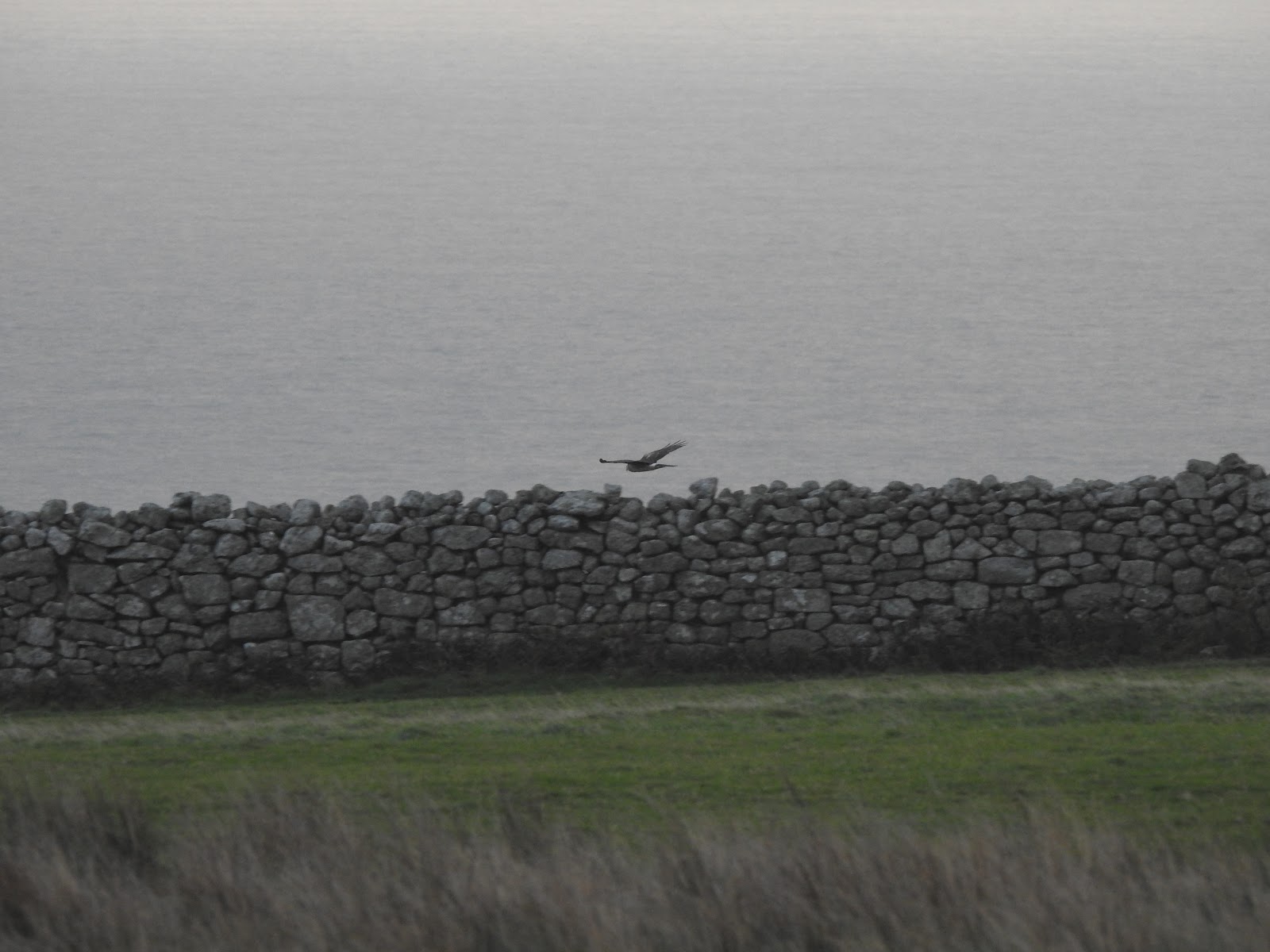A very blustery week with rain and strong northwesterly winds on the 21st and 22nd. Even stronger winds came from the west for the next two days before calming slightly and remaining dry for the end of the week.
A max count of 14 Mallard on the 23rd includes the nine
birds frequently seen at Rocket Pole Pond as well as five at Pondsbury. Five
Teal were on Pondsbury on the 23rd and four on the 25th. Two Woodpigeon were
recorded in Millcombe on the 22nd to the 25th but went down to one on the 26th.
A single Snipe was seen on the 23rd and a single Oystercatcher remains in the
Landing Bay.
With the strong winds the number of large gulls recorded
increased as flocks formed in the Village fields. Twenty Great Black-backed
Gulls were counted on the 24th and 14 on the 26th. The highest count of Herring
Gulls was 32 on the 27th and nine Lesser Black-backed Gulls were seen on the
24th and 26th. A Kittiwake was seen flying over Quarter Wall on the 26th. Three
Great Northern Diver were seen together in the Landing Bay on the 24th and 25th
with only one seen on the 26th and two on the 27th.
 |
| Great Northern Diver, Landing Bay © Stuart Cossey |
 |
| Herring Gulls and Lesser Black-backed Gulls, Tillage Field © Stuart Cossey |
A Sparrowhawk and Kestrel remain around the south of the
island. The Merlin was seen again this week and on the 27th hunted a Skylark
over Millcombe Valley. The Jackdaw is still present, now into its sixth week on
the island.
Two Chiffchaff were recorded on the 25th, one on the 26th
and three on the 17th. These birds may be new arrivals or could have been on
the island for some time but difficult to locate in the strong winds. Two
Goldcrest were heard on the 23rd with a single bird the rest of the week.
Notable Starling passage was recorded on the 26th with a count of 600. Only a
single Fieldfare was recorded on the 23rd and 25th. A single Redwing was
recorded on the 21st, 22nd,23rd and 25th.
Two Black Redstart were reported on the 24th and one on the
23rd. A single White Wagtail arrived overnight on the 26th. The number of Meadow
Pipit remained in single figures most of the week, and peaked at 17 on the
22nd. There was a surprise record of an American Buff-bellied Pipit flushed up
from Pointless Wall on the 25th. If accepted by the British Birds Rarities Committee
this would be the first record for the island after the likely contender in November
2021 was declared not proven.
Chaffinch numbers only peaked at 35 on the 27th. A small
flock of four Goldfinches was seen by the Paradise Row bird feeders on the 27th after
a pair and a single bird were seen on the 22nd.
In non-avian news, a Harbour Porpoise was seen off Rat
Island during a seawatch.
Contributors: Stuart Cossey, Trevor Dobie












